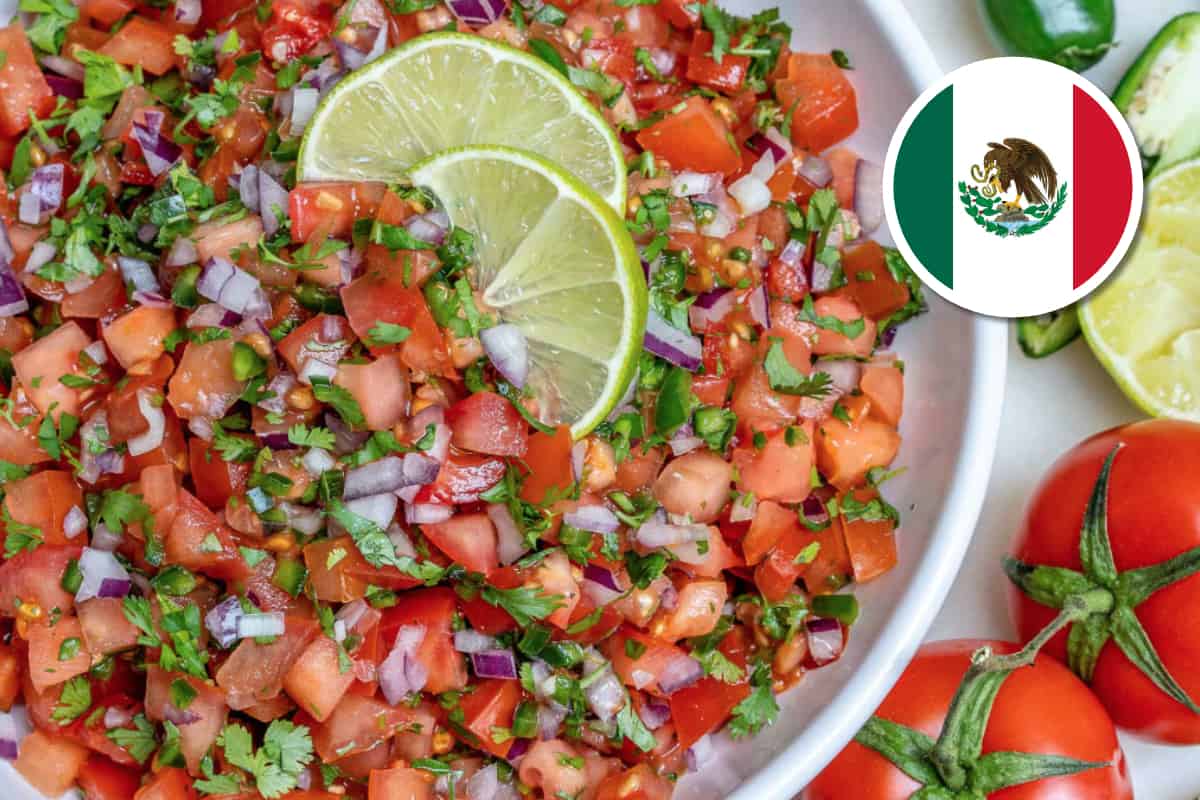Mexican sauces are is all about spiciness, but it’s never only about heat, but also the rich traditional flavors. The way many dishes achieve those flavors is through the use of tomatoes and peppers.
Mexico is the spiritual home to hot peppers and even popular vegetables like tomatoes, two of the critical ingredients in any sauce or salsa.
The Mexican table is not complete without salsas. They give life to tacos, enchiladas, stews, and grilled meat. Mexican sauces are the key to almost every signature dish in the country’s cuisine dating back centuries.
Salsas are the soul of the country, and they’re so varied that it would be impossible to describe them all. Amongst the vast array of spicy concoctions, though, some must be acknowledged for their popularity and importance.
These are the 12 most popular types of Mexican sauces; we bet you’ll love them all. How many of these have you tried so far?
1. Pico de Gallo
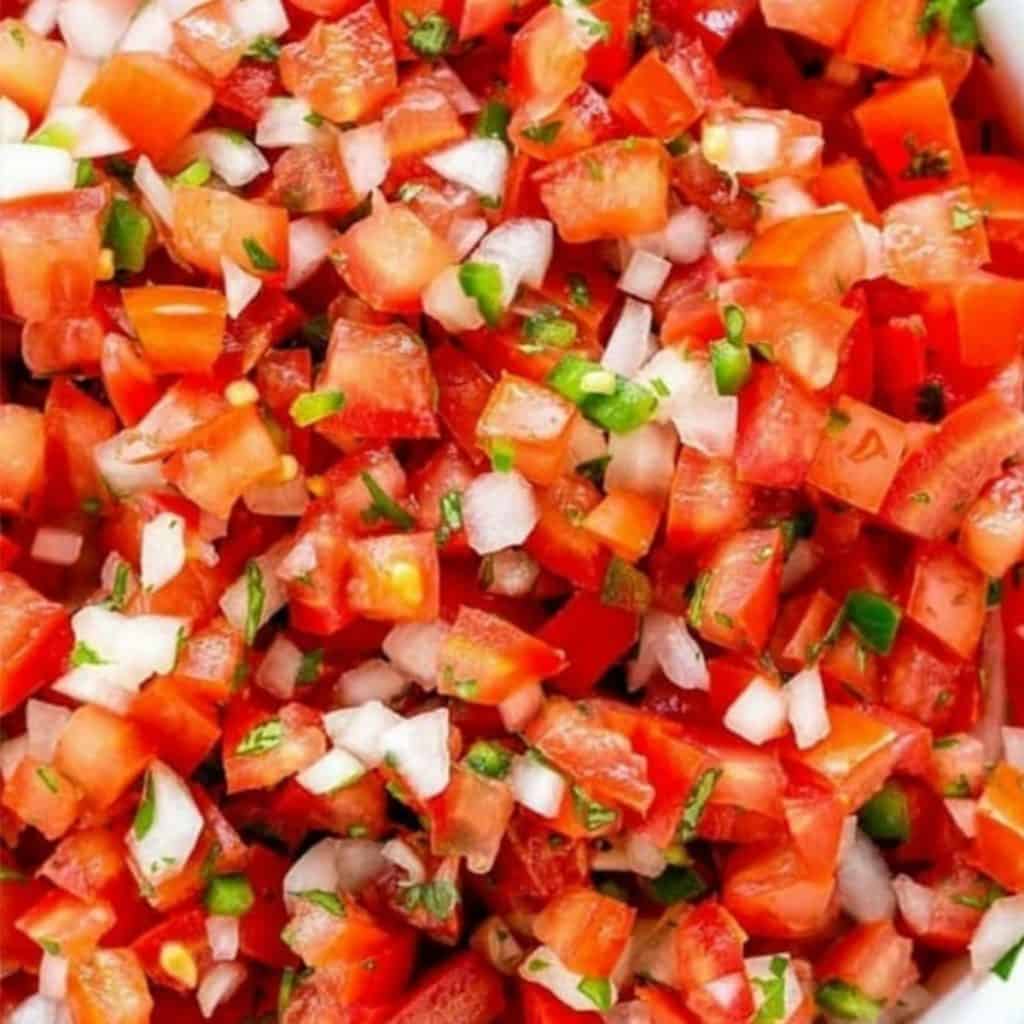
One of the most straightforward, but versatile salsas in the Mexican repertoire is Pico de Gallo. Unexplainably called The Roosters Peak, this sauce is known for showing the colors of the Mexican flag: red, white, and green.
Diced tomatoes and onions mixed with minced green peppers and chopped cilantro leaves are fresh, spicy, and full of flavor.
Brought together by lime juice and a pinch of salt, Pico de Gallo is excellent over all kinds of tacos, from grilled meat tacos to the famous Tacos al Pastor. Here is a quick and easy Pico de Gallo recipe.
2. Guacamole
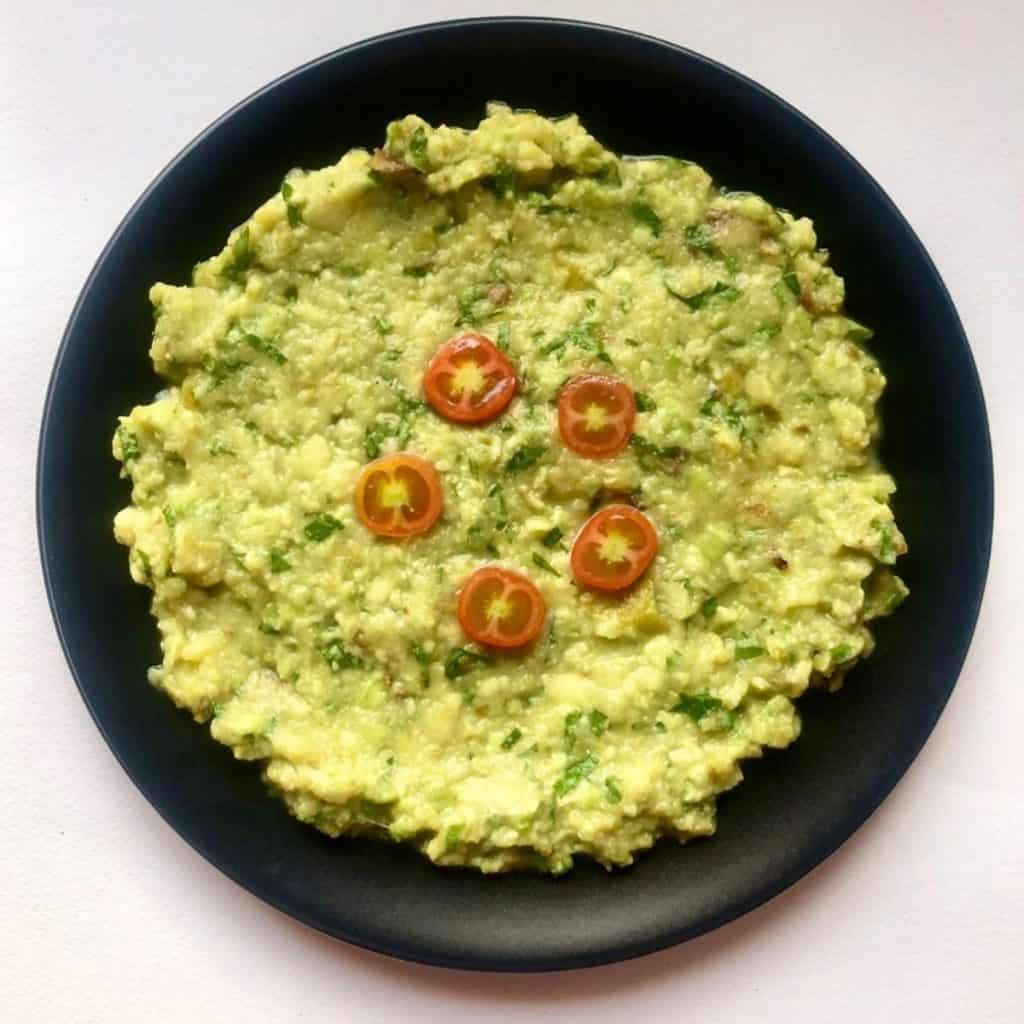
Yes, guacamole is a type of Mexican salsa. Actually, the suffix “mole” means sauce in the Aztec dialect.
Pureed avocados give body to a thick sauce brought to life by minced green jalapeño or serrano peppers, diced onions, cilantro leaves, and sometimes tomato.
The avocado pulp browns quickly in contact with oxygen, but lime juice will keep it bright green and fresh.
Guacamole is not only a fabulous dip, add it to your tacos, and experience its full potential.
3. Salsa Verde Cruda
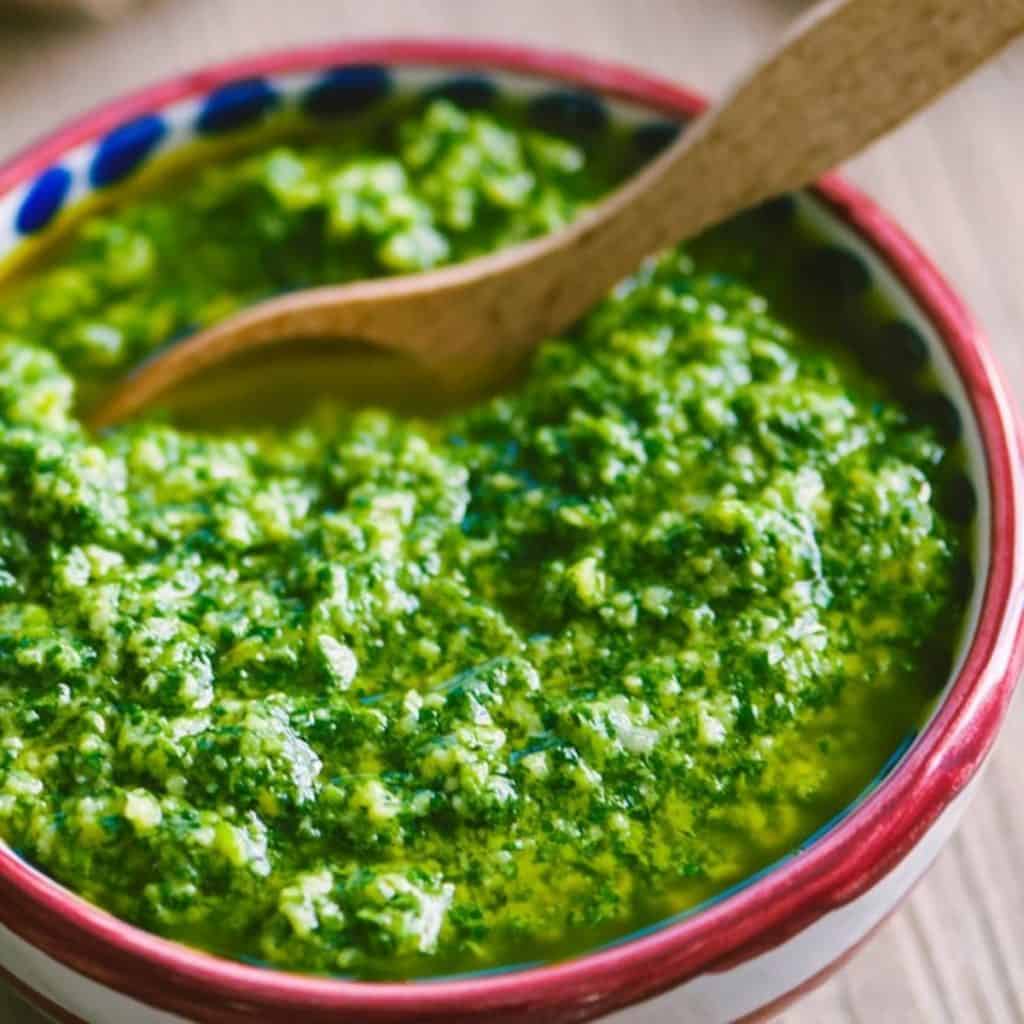
Green tomatoes are one of the most cherished ingredients in Mexican gastronomy and massively under-represented elsewhere.
Tangy and citrusy, juicy, and herbal, this variety of tomatoes are not unripe red tomatoes but hardcore-green all the way to ripeness.
Green tomatoes are the base for the vast realm of Mexican green salsas, from which the most popular is the salsa verde cruda or raw green salsa.
Raw ingredients, green tomatoes, onions, garlic, cilantro leaves, hot peppers, and a pinch of salt are pounded or blended for a fresh sauce hard to beat.
Try it with any taco; this one has universal uses.
4. Salsa Verde Cocida
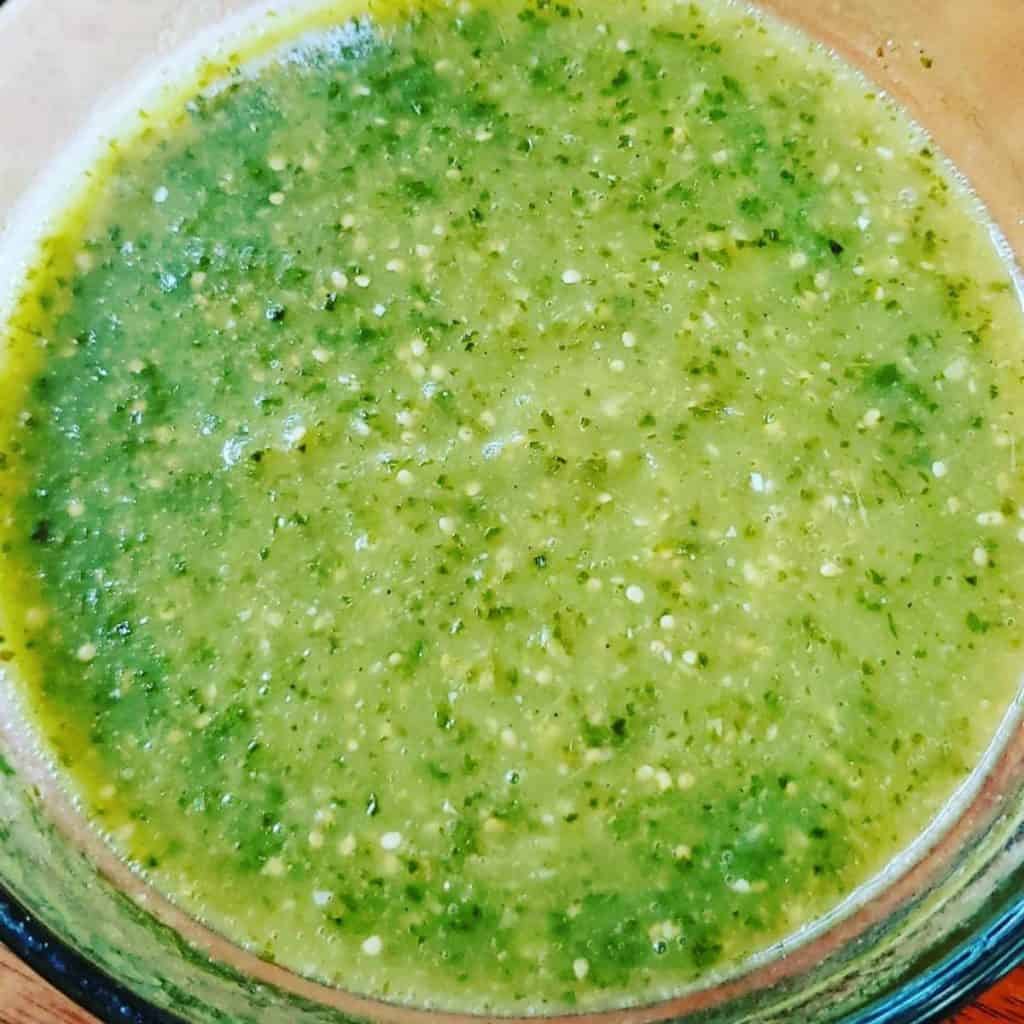
This green salsa variety, the cooked green salsa, shares ingredients with its raw counterpart, but the ingredients are cooked in boiling water before being incorporated into a thick, savory sauce.
If you ever heard about enchiladas, then you already know this sauce. It’s also ubiquitous on the Mexican table, and although similar to the raw kind, it’s decidedly different.
Try the raw and cooked versions side by side and choose a favorite; both are charmers.
5. Salsa Roja
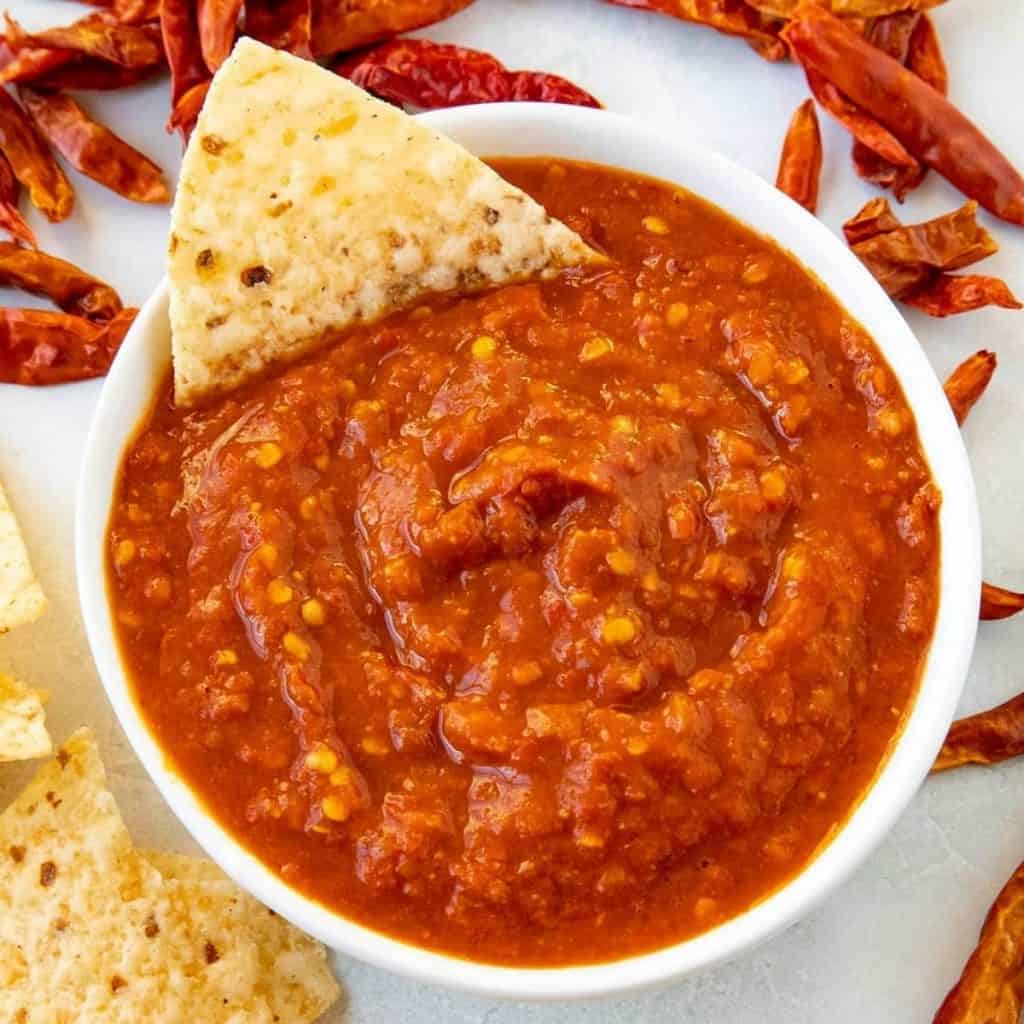
The green tomato is special, sure, but it’s its red sibling that conquered the world and made its way to pizzas and burgers alike.
Red tomatoes are the base for the Mexican red salsa, for which there are too many variations. Any hot pepper can fuel this sauce, while garlic, onion, and cilantro leaves keep it balanced.
Not dissimilar to French mother sauces, you can transform green and red sauces to get something entirely new and exciting. Use chipotle peppers to make a chipotle sauce or ancho peppers for an ancho salsa.
6. Salsa Borracha
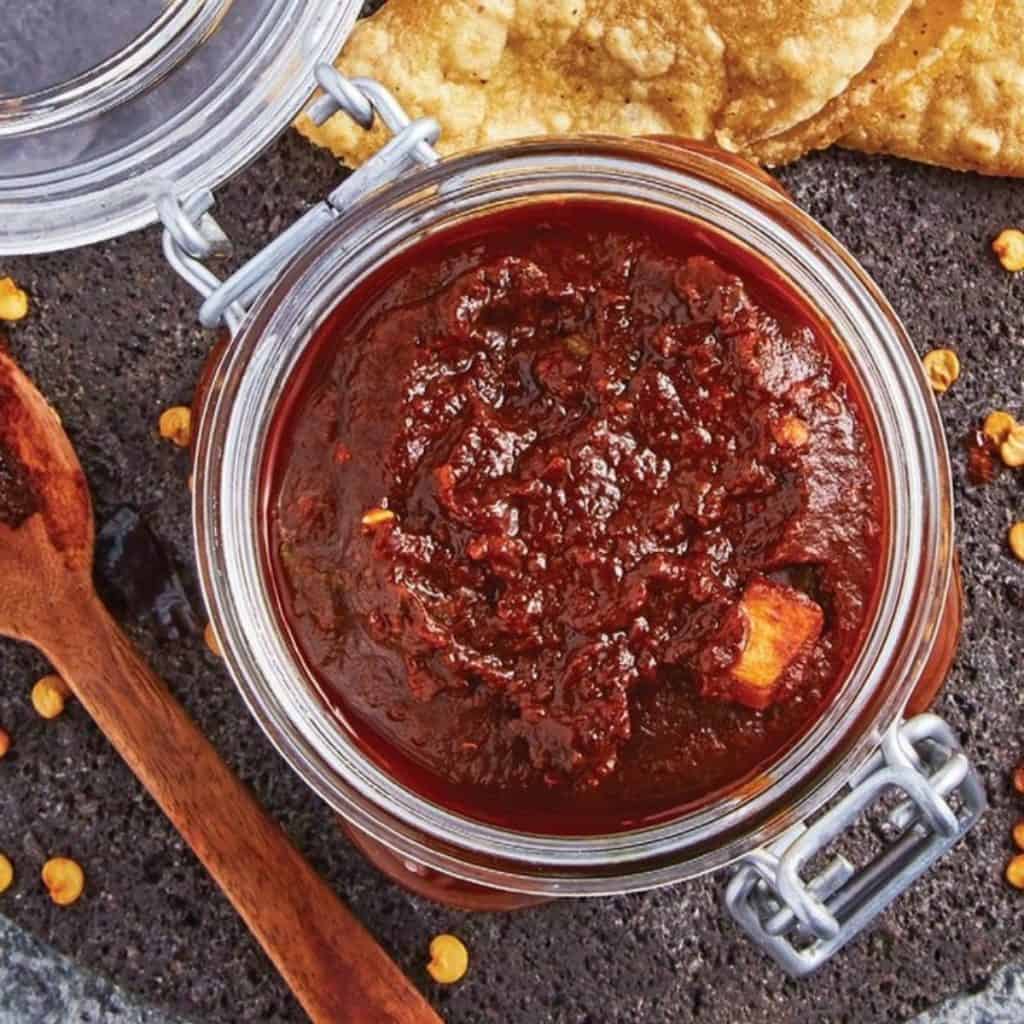
This interesting sauce is called the drunken sauce; we know we have your attention now.
The salsa borracha is particularly good over charcoal-grilled meat and is based on green tomatoes, garlic, and pasilla chili peppers.
Pasilla peppers are dried peppers that need to be hydrated before use. Smokey and spicy these peppers give a coppery color to the sauce.
The most crucial ingredient for this sauce, and the one that gives it its name, is pulque, fermented agave sap that has been consumed for centuries in the country.
Very perishable and nowadays rare, if you don’t find pulque, you can use lager beer to your sauce for a similar effect.
7. Xnipec
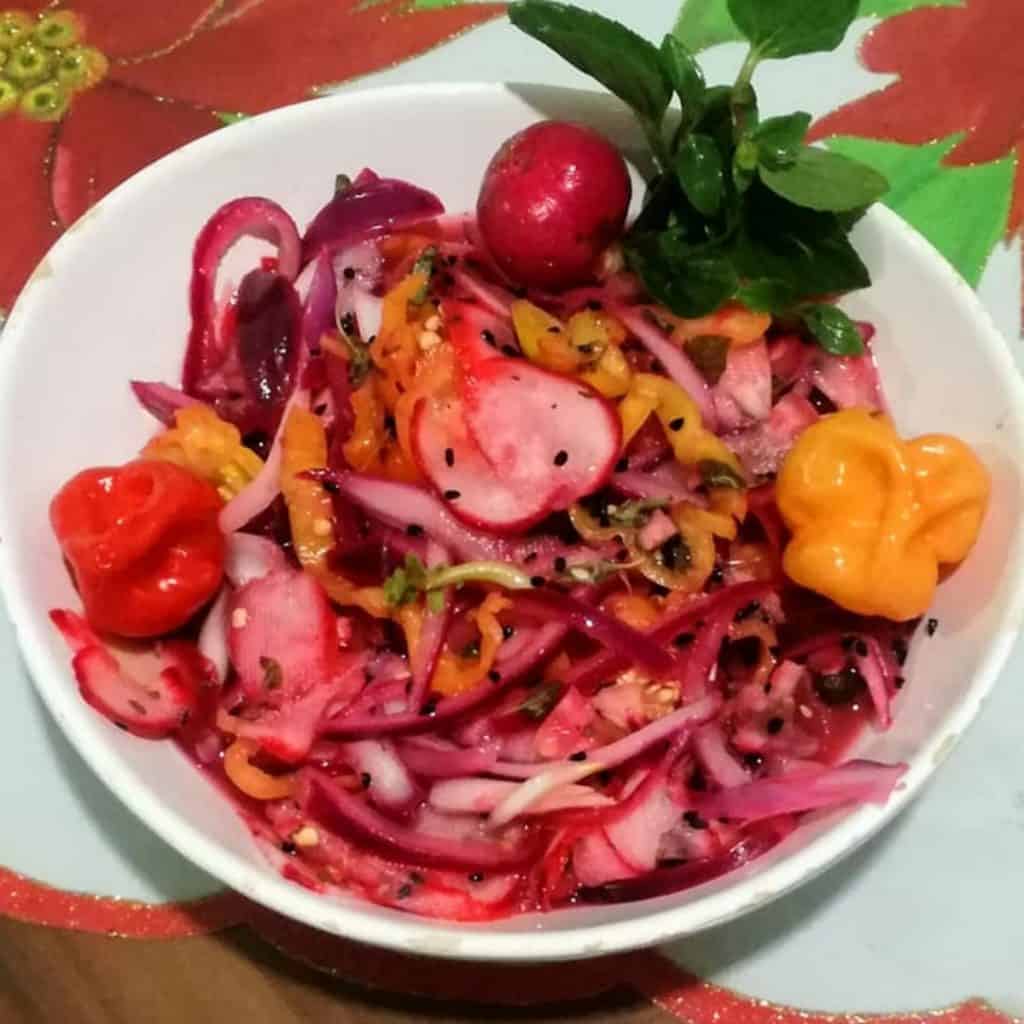
The southern Yucatan Peninsula, home to the Mayan culture, is known for the use of the fiery habanero, one of the hottest peppers on the planet.
Don’t let the strange Mayan name frighten you; be afraid of the spiciness of the sauce itself instead.
The xnipec sauce comprises julienne red onions, minced habanero peppers, cured in sour orange juice, and seasoned with dried oregano leaves. The perfect appetizer for the famous pork cochinita; the region’s signature dish.
8. Peanut Salsa
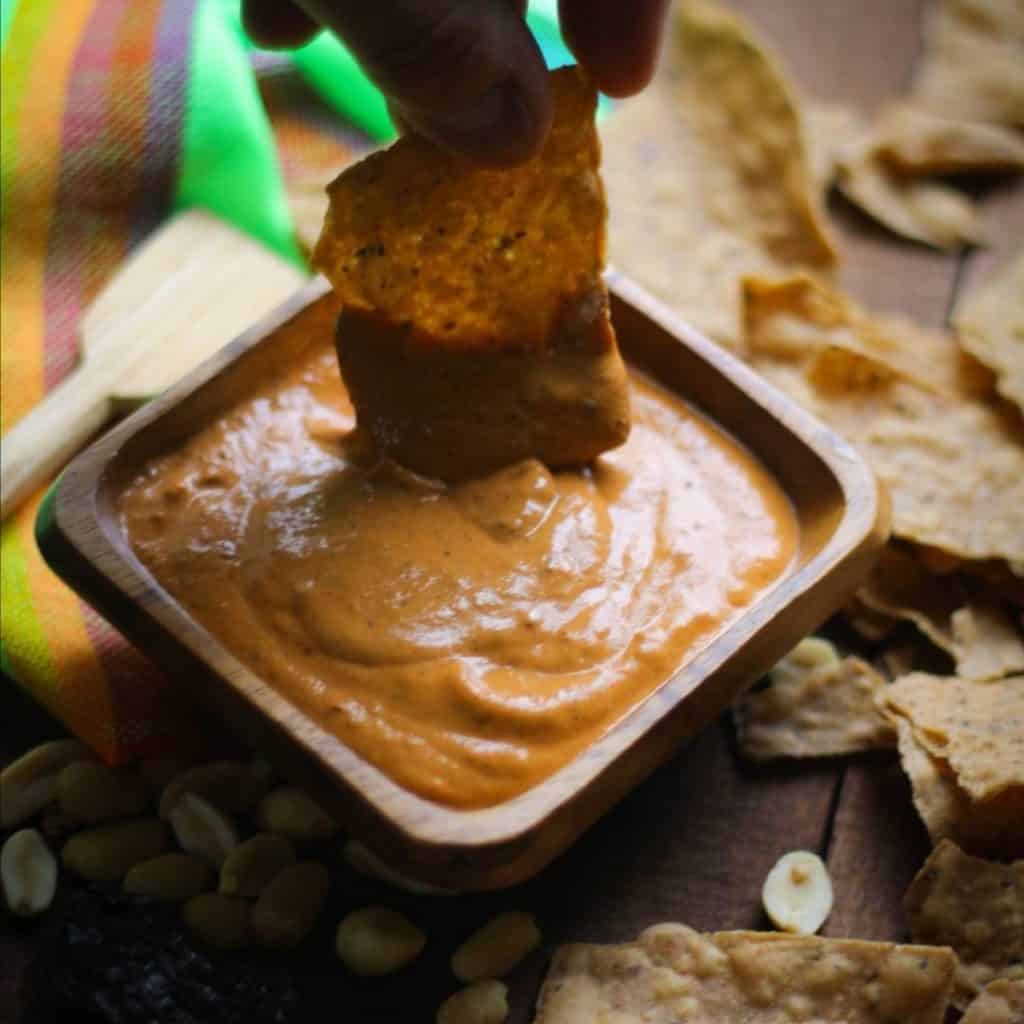
Some Mexican sauces are thicker than others, and they can incorporate unusual ingredients like mango, pineapple, or in this case, peanuts.
A peanut salsa gets its body from peanuts, but it’s dried hot peppers like the popular arbol, ancho, or pasilla chiles that add an addictive spiciness to the nutty sauce.
This one is a great partner for anything grilled.
9. Mole
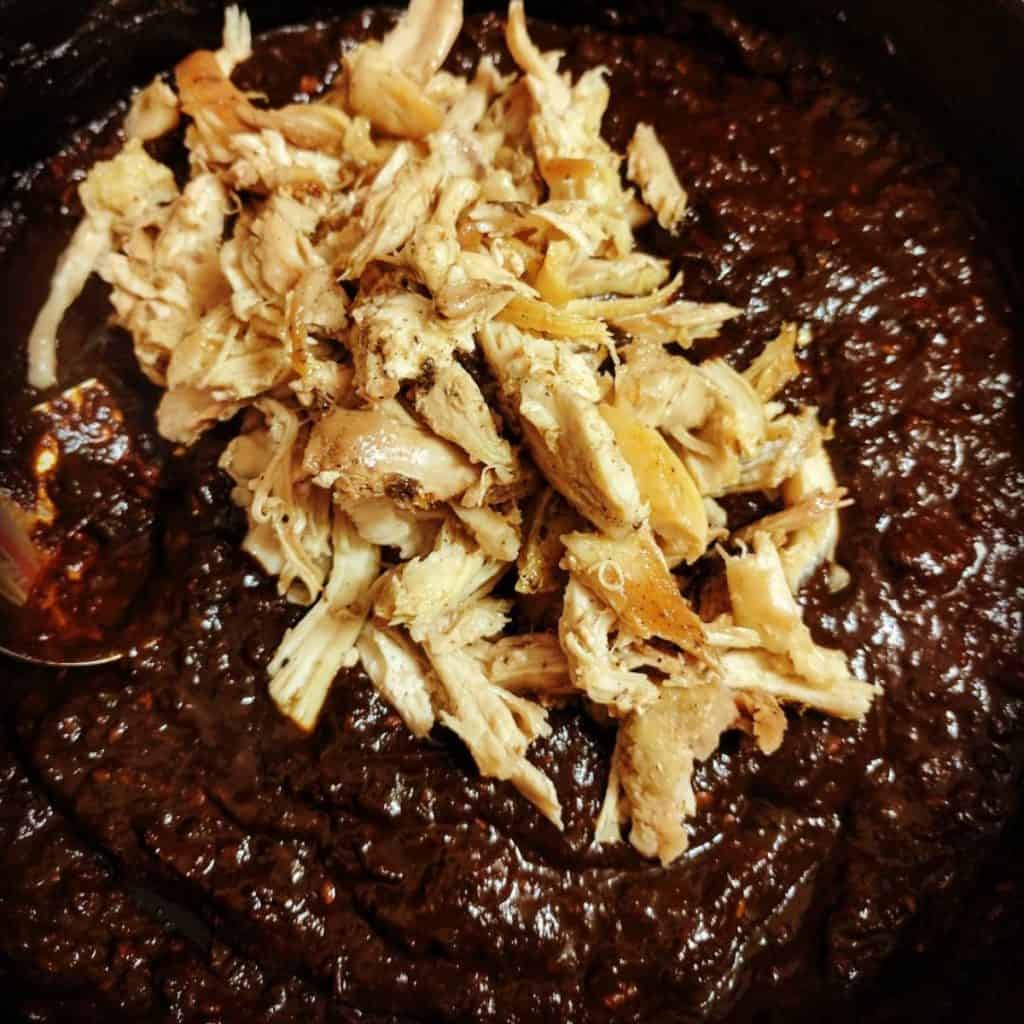
As mentioned before, “mole” means sauce in the native Aztec dialect, but mole is not one sauce but many.
There are dozens of different moles in the Mexican cookbook, and they’re used in stews and more elaborate dishes beyond tacos.
The most popular mole is the Poblano mole. Often served over roasted turkey, it can have over twenty ingredients, including chocolate, many hot peppers, raisins, almonds, garlic, seeds, spices, and herbs.
Considered the most complex sauce on earth, it’s a tough challenge to undertake for both amateur and professional cooks alike, but we recommend you trying it if you have the chance!
10. Chiltomate
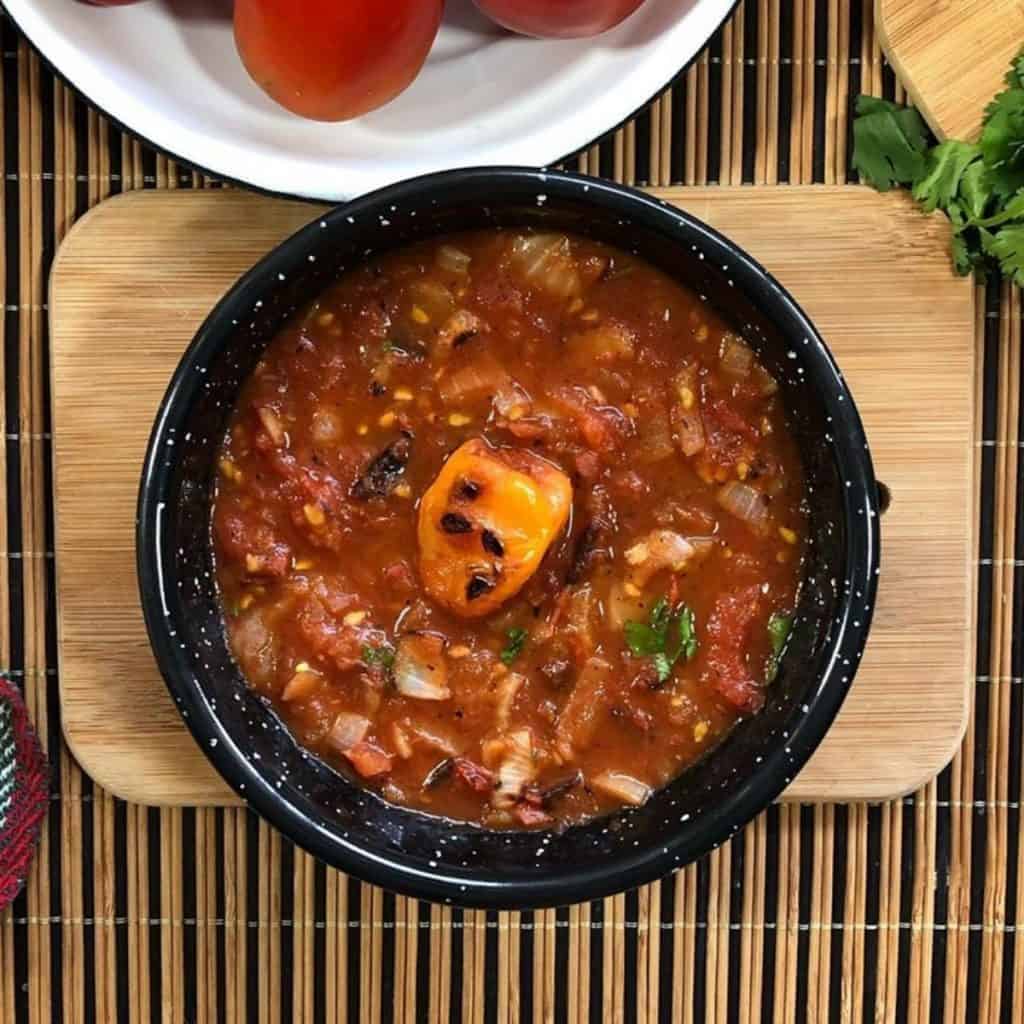
Another Mayan specialty, famous in the Yucatan Peninsula, is chiltomate. As the name suggests, this is a straightforward sauce based on tomatoes and chili peppers, particularly habanero.
With an exceptionally smooth texture and a bright red color, this sauce is lovely, and despite being made with one of the spiciest peppers on earth, it can often be quite mild.
This sauce is excellent with eggs, present in many specialty Mayan dishes. We also found this really easy chiltomate recipe for you to try.
11. Salsa Bruja
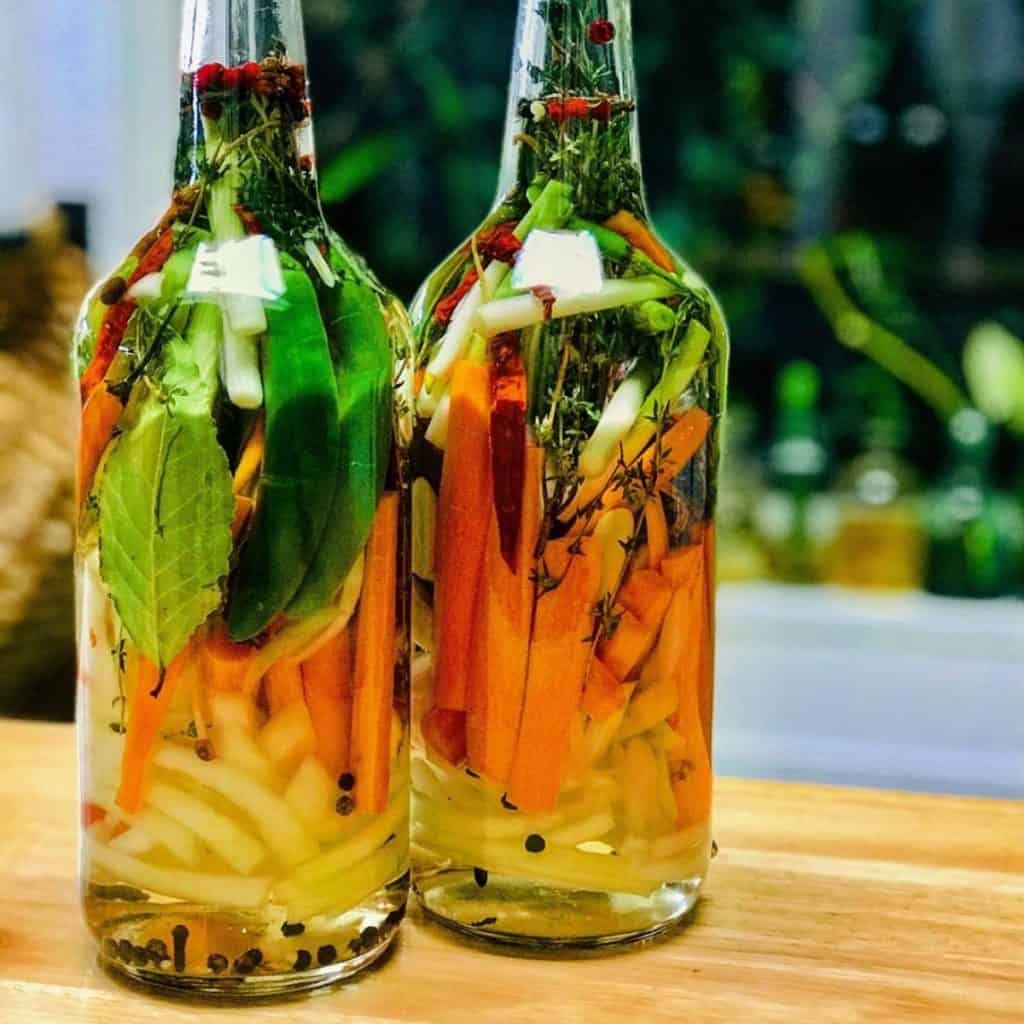
Somewhat of an oddity, the salsa bruja, or ‘witch’ sauce is unlike any other. It’s more of an infused vinegar than a sauce, and in Mexico, it’s used to give spiciness and flavor to seafood dishes like the shrimp cocktail.
It all starts with a glass jar, then filled with vinegar and coarsely chopped onions, garlic, carrots, and many aromatic herbs, including laurel, thyme, rosemary, and black peppercorns.
Cumin, cloves, and oregano are common, and a few sliced serrano peppers bring the heat to an infused vinegar so intensely flavored that it’s hard to describe.
Just a teaspoon of the coastal specialty changes the flavor profile of your shrimp cocktail massively. This is witchcraft for sure.
12. Salsa Macha

When you think you’ve seen it all, there comes salsa macha to open your eyes to new, exciting, and spicy possibilities.
Salsa macha is an oil-based sauce, made by infusing olive oil with fried dried chili peppers, often with garlic and peanuts, all ground into an oily paste spectacular with whole fried fish.
There are several versions for the salsa macha, but they include neither green nor red tomatoes, this is the purest essence of hot peppers and not much more.
There you go! Many different types Mexican sauces to spice up your life!
Mexican salsa are always better when homemade, and there’s no official recipe for any of them. Every cook, every family has recipes for their favorite types of salsas with their way of bringing some spiciness to the table, and you can have yours.
We can debate which one of these Mexican sauces are the best. Pico de Gallo and Guacamole are now popular all over the world. Some will argue that it’s simple because you can make them quickly and easily. But you will see that most of these recipes are pretty easy. Try a few of these and let us know which one is your favorite.
Inspired in the most popular Mexican sauces, with the right ingredients, you can make fabulous types of salsas to share your love for traditional Mexican food with your friends and family.
Add a few hot peppers to your grocery list and become a salsa master yourself. The main piece of equipment you can buy to make your prep a bit easier would be a good quality blender. If you already have a food processor that will work just fine. Otherwise, you’ll have to go old school and chop everything by hand.
Are you a Mexican Foodie? Then make sure you check out these other stories to learn more about the traditional Mexican dishes, or our delicious fun facts about the most popular types of tacos in Mexico. And if you are really adventurous and want to try making these dishes at home then make sure to take a look at our list of Mexican spices before you start.

